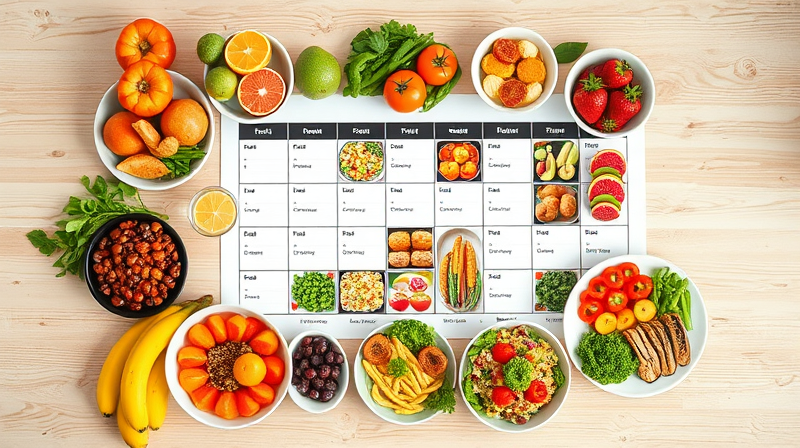In today's fast-paced world where making informed food choices is more important than ever, the ability to decipher nutrition labels is a vital skill. With updates to the Nutrition Facts label implemented as of March 2024, reading these labels has become easier and more accessible for everyone. This guide is designed to empower you with the confidence to navigate your food choices and enhance your overall dietary health.
The enhanced design of the Nutrition Facts label focuses on clarity and simplicity, ensuring that every consumer, regardless of their background, can understand what they eat. By familiarizing yourself with the standard layout and key components, you unlock the potential to truly make healthy choices that reflect your lifestyle goals.
Understanding the Basic Layout
Every nutrition label is organized into specific sections that allow for quick reference and easy comparison between products. The top section of the label provides product-specific information, including the serving size and number of servings per container. This information is critical because all nutritional data provided is based on one serving size, not the entire package, unless clearly indicated otherwise.
Knowing what a serving truly represents is your first step toward controlling your nutritional intake. Always measure or estimate the serving size accurately to know exactly how much of each nutrient you are consuming.
Key Components of the Label
The updated layout brings certain elements into focus. The calorie content now features prominently in bold and large text, reflecting its significance in dietary planning. This change empowers you to spot high-calorie items at a glance, helping you manage your energy intake more effectively.
- Serving Information: Always check the serving size and the number of servings per container before you judge the nutritional content of the food.
- Calorie Content: Note the calories per serving. This is your benchmark for gauging energy consumption.
- Nutrient Content: Essential nutrients like protein, fiber, fats, and sugars hold the key to understanding how a product fits into your overall diet.
These elements work together to provide a snapshot of how a particular product may contribute (or detract) from your daily dietary needs.
Evaluating Essential Nutrients
Not all nutrients are created equal, and accurate label reading involves distinguishing between beneficial and potentially harmful ingredients. For instance, protein and fiber are essential for promoting satiety, supporting muscle and bone health, and maintaining a strong immune system. Adequate fiber intake, recommended at 25-30 grams per day, aids in digestion and may even reduce the risk of chronic diseases.
When it comes to fats, focus on incorporating healthy unsaturated fats found in nuts, seeds, avocados, and oily fish. These fats are crucial for overall cardiovascular health and should be preferred over saturated fats, which can contribute to heart disease if consumed in excess.
Sugars are another critical component. With the updated label now clearly distinguishing between total sugars and added sugars, you can better assess whether the sugars in your food come from natural sources or are added during processing. For optimal health, strive to reduce added sugars in your diet to less than 10% of your daily calorie intake.
Practical Tips for Effective Label Reading
Implementing the knowledge gained from nutrition labels into your daily routine doesn’t have to be a chore. Here are some practical tips to help you get started:
- Compare similar products: Look at the nutritional content side by side to determine which food item better fits your health goals.
- Measure your serving sizes: Always correlate the serving size with your actual consumption to avoid inadvertent overeating.
- Monitor ingredients: The ingredient list, displayed in descending order by weight, can reveal vital information about potential allergens and undesirable additives.
- Use %DV as a guide: The Percent Daily Value (%DV) helps you understand how each nutrient contributes to your daily diet based on a 2,000-calorie intake, making it easier to determine if an ingredient is high or low in a specific nutrient.
- Limit added sugars, saturated fats, and sodium: Choose products that lean towards natural ingredients and nutritional balance rather than those high in less desirable nutrients.
Following these steps not only streamlines your shopping decisions but also creates a strong foundation for a healthier diet. Knowledge is power when it comes to nutrition, and by mastering these labels, you are equipping yourself with a tool for lifelong wellness.
Beyond the Numbers: Delving Into the Ingredient List
The ingredient list is more than just a formality—it’s a treasure trove of information for those who wish to avoid hidden additives and potential allergens. Items like food additives, artificial colors, and hidden sugars such as corn syrup or dextrose can significantly impact your overall health, particularly if consumed regularly.
Paying attention to these lists helps in identifying processed foods that may undermine your nutritional goals. When shopping for food, adopt a habit of scanning the ingredient lists, ensuring you choose items that boast whole food ingredients and minimal artificial additives. This extra step can be transformative in your journey to a healthier lifestyle.
The Takeaway for a Healthier Future
Understanding nutrition labels is more than just a reading exercise—it is a pathway to making empowered decisions about your health and wellbeing. As you begin to see labels as integral tools rather than mere information blocks, your approach to food shopping will become more strategic and health-focused.
Remember: each time you scrutinize a label, you are taking an active step towards controlling your diet, sustaining energy levels, and preventing chronic diseases. From being conscious of serving sizes to detailed ingredient analysis, every bit of effort contributes to a healthier version of yourself.
Embrace these new insights and apply them every day to transform confusion into clarity. With dedication and mindfulness, reading nutrition labels can become a cornerstone habit in your journey to energetic, informed living.








